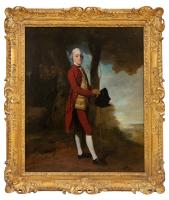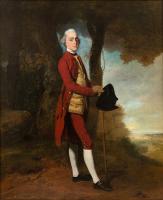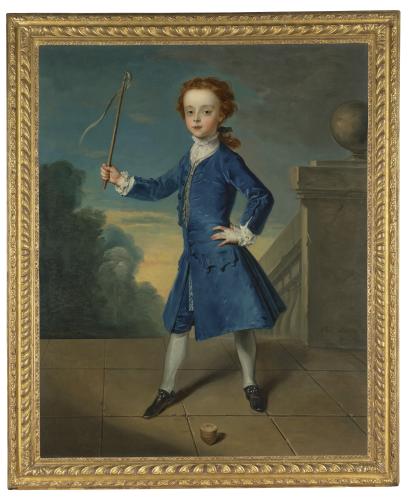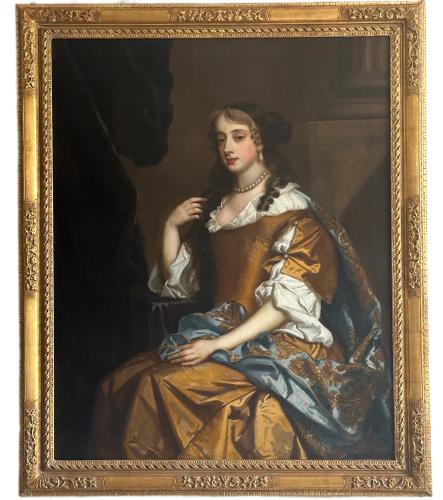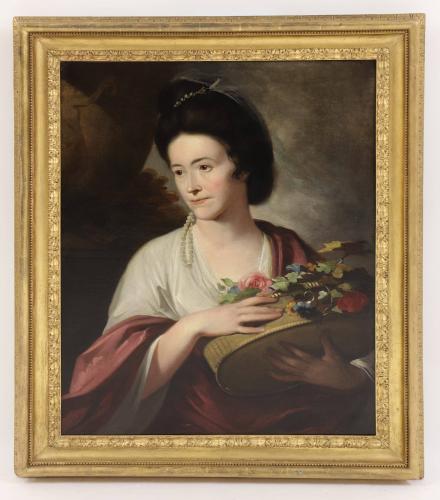
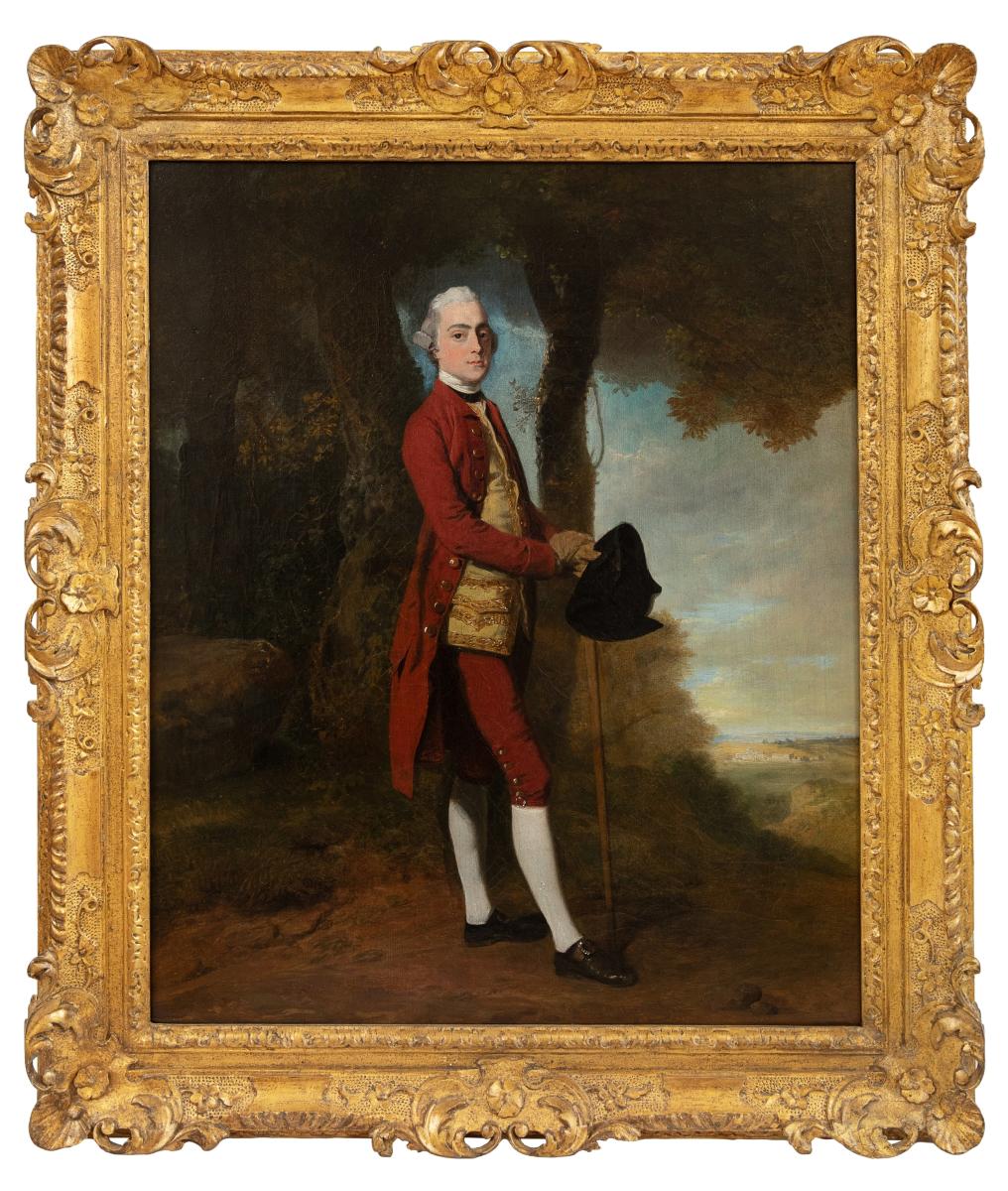
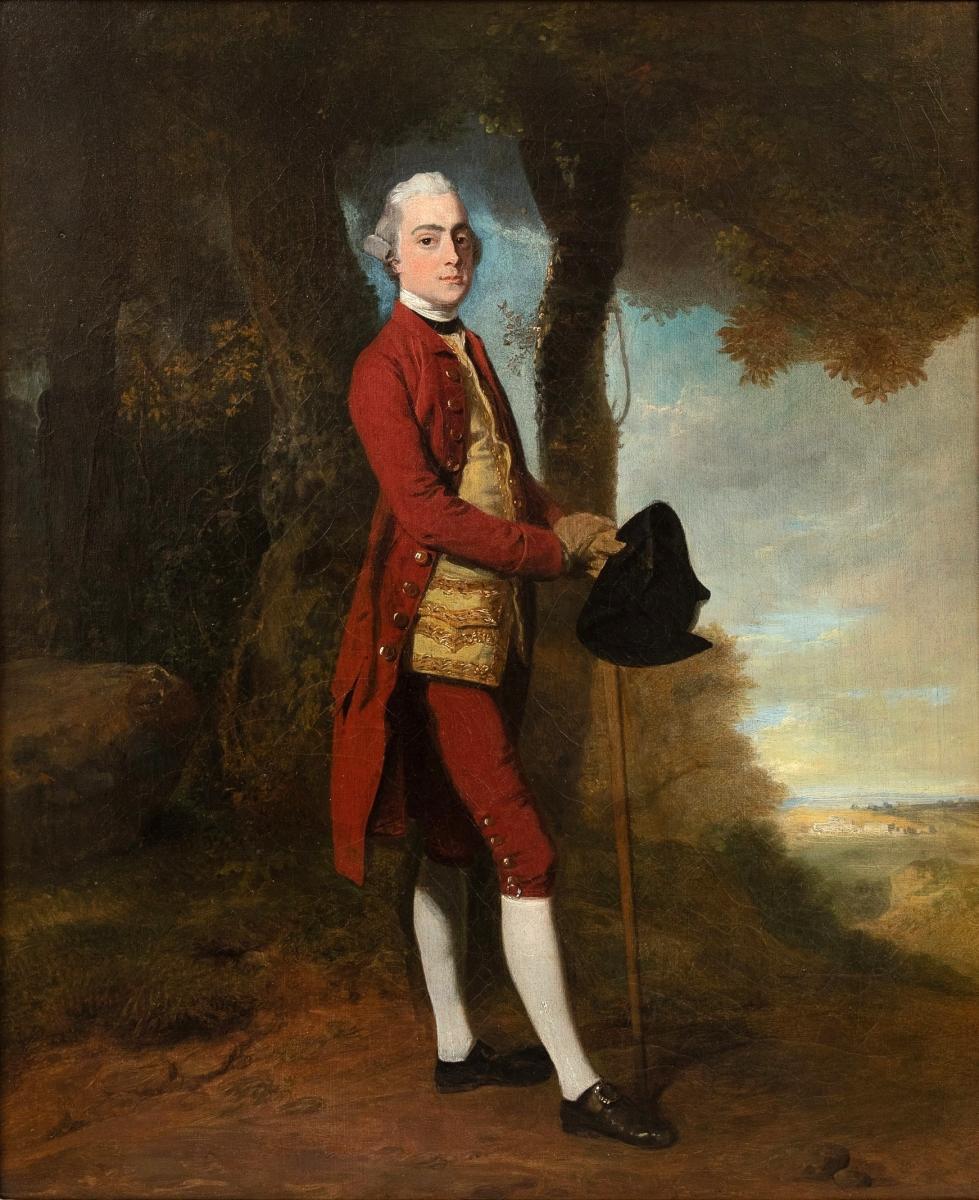
Price
£14000.00This object is eligible for a Certificate of BADA Provenance
The BADA Standard
- Since 1918, BADA has been the leading association for the antiques and fine art trade
- Members are elected for their knowledge, integrity and quality of stock
- Our clients are protected by BADA’s code of conduct
- Our dealers’ membership is reviewed and renewed annually
- Bada.org is a non-profit site: clients deal directly with members and they pay no hidden fees
Portrait of James Stanley (1750 - 1810), circa 1775, full-length, wearing a red coat and breeches and a gold embroidered waistcoat, holding his hat whilst resting on his cane under a tree in a woodland park landscape.
Oil on canvas in a carved giltwood frame decorated with floral and shell motifs
Dimensions:
(Canvas) 29 in. (H) x 23.75 in. (W)
(Frame) 36.75 in. (H) x 31.5 in. (W)
Provenance:
With the sitter, James Stanley (1750-1810), and thence by descent to his grandson;
Edward James Stanley, who married Mary Dorothy Labouchere (1843-1920), eldest daughter of Henry Labouchere, Lord Taunton (1798-1869);
By descent to their son E. A. V. Stanley;
Sotheby, Wilson & Hodge, 14 July 1920, lot 174;
Private Collection, United Kingdom
James Stanley was born in 1750. He was the grandfather of Edward James Stanley, who married Mary Dorothy Labouchere, eldest daughter of Henry Labouchere, Lord Taunton (1798-1869).
Lord Taunton was a prominent Whig and Liberal politician and also formed a wide-ranging art collection of very high quality. He lived at Stoke Park, Stoke Poges, but later moved to a larger house, Quantock Lodge near Over Stowey, which he built between 1856 and 1868 to accommodate his collection. After his death Quantock Lodge and the art collection passed by descent to Edward Arthur Vesey Stanley, who sold part of it at auction. Included was the present portrait, which had come into Lord Taunton’s collection from the Stanley family.
The 14 July 1920 sale was conducted by Sotheby, Wilkinson & Hodge, the present work sold as lot 174: 'Zoffany (attributed to). Portrait of a gentleman: whole-length, walking towards the right in a landscape; in red coat and breeches and embroidered waistcoat. Canvas, 29 x 24 ins.'
John Hamilton Mortimer was born on 17 September 1740 in Eastbourne, Sussex, the fifth and youngest child of Thomas Mortimer (1697-1774), a mill owner and customs officer, and his wife, Catherine, née Smith (d. 1746).
He may have received some instruction in painting from a paternal uncle, Roger Mortimer (1700-1769), an itinerant artist. In 1756 or 1757 Mortimer's father paid £100 for him to be placed in London for three years in the studio of the portrait painter Thomas Hudson (1701-1779). Finding Hudson's studio regime quite rigid, Mortimer was by March 1759 working under Robert Edge Pine (1730-1788), a history painter and portraitist of republican views who later moved to America. Although Mortimer did not stay with Pine for long, he was influenced by his painting style, his subject matter, and probably his radical political views. Mortimer embraced the opportunity for developing his drawing skills and contact with other students and artists in London which he found in the Duke of Richmond's Sculpture Gallery, the St Martinis Lane Academy and Shipley's Drawing Academy. Mortimer won prizes offered by the Society for the Encouragement of Arts, Manufactures, and Commerce, for drawings done in the Duke of Richmond's Sculpture Gallery and the St Martin's Lane Academy. Mortimer met the painter Joseph Wright of Derby (1734 - 1797), with whom he became friends, in Hudson's studio, and in Shipley's drawing school he probably met two of his closest artist friends, Thomas Jones (1742-1803) and James Gandon (1742-1823).
In 1750 the Society for the Encouragement of Arts, Manufactures, and Commerce began to offer premiums for English (and later British) history painting. Mortimer won second prize in 1763 and in 1764 he won the first prize for St Paul Preaching to the Ancient Britons (Guildhall, High Wycombe, Buckinghamshire). This success established his reputation as a history painter. Alongside this, he painted portraits and particularly group portraits, in the style of John Zoffany and Francis Wheatley.
Mortimer exhibited at the Society of Artists every year from 1762 until 1777. Unlike many of the older established artists he did not transfer to the Royal Academy on its foundation in 1768, but remained loyal to the Society of Artists along with more radical artists such as Joseph Wright of Derby. He was active in setting up the Society's academy of drawing and painting in Maiden Lane, Covent Garden, in 1769, having become a director of the Society in 1768. He was made vice-president in 1770 and was president in 1774-5.
Mortimer collaborated on works with other artists during the 1760s and early 1770s, no doubt largely as a result of friendships formed in the drawing academies and the Society of Artists. He painted figures in landscapes by Thomas Jones before the latter's departure for Italy in 1776, and he worked with Richard Paton, introducing some figures into Paton's views of the royal dockyards, 1770-71 (Royal Collection). He painted a large decorative ceiling for the saloon of Brocket Hall, Hertfordshire (c.1770-73), in which he was assisted by Francis Wheatley and James Durno.
Dimensions
31.5 x 23.75Condition report
Good, ready to hang conditionThe BADA Standard
- Since 1918, BADA has been the leading association for the antiques and fine art trade
- Members are elected for their knowledge, integrity and quality of stock
- Our clients are protected by BADA’s code of conduct
- Our dealers’ membership is reviewed and renewed annually
- Bada.org is a non-profit site: clients deal directly with members and they pay no hidden fees


